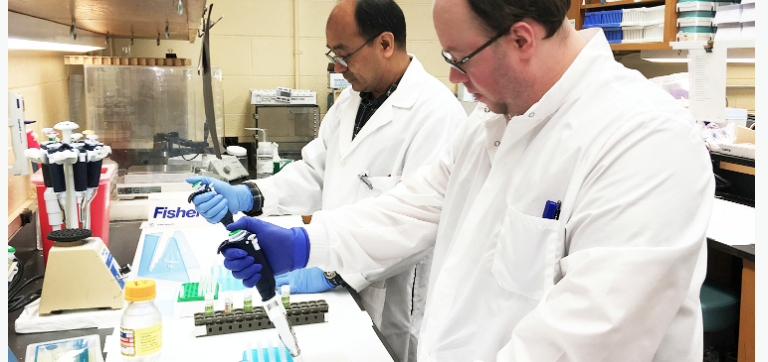Nonhuman Primate Researchers Push to Support Biomarker Validation Across Community
Biomedical research has been transformed over the past several decades; new capabilities that researchers once only dreamed of are now possible. As a result, biomarkers (e.g., genes, proteins, or steroids) or pathogens (e.g., viruses, bacteria, and parasites) can be detected easily with laboratory assays (tests). Because biomarkers and the presence of pathogens contribute to an organism’s physiological profile, they hold immense potential for the study of life.
These new capabilities, however, bring a new set of challenges. Each new assay must be validated; researchers must understand whether their findings are consistent with those obtained from other laboratories and under different protocols. Dr. Toni Ziegler, a distinguished scientist at the Wisconsin National Primate Research Center, explained that this issue is particularly prevalent within the nonhuman primate (NHP) research community. Researchers use NHP models to better understand human diseases and perform translatable pre-clinical research on potential therapeutic interventions.
“We need to work at the level at which the human clinical laboratories work,” Dr. Ziegler emphasized. “This research is so important for all our human modeling. We really feel that we need to reach those standards that the human (researchers) do.”
Dr. Ziegler is the Chair of the National Primate Research Centers (NPRC) Biomarkers Assay Group. In August 2019, the group hosted an integrative symposium titled “It’s Your Resource: National Primate Research Center Biomarker Core Labs—Measuring Physiological Condition of Nonhuman Primates for Your Research” at the American Society of Primatologists’ annual meeting to convey the importance of assay validation across the NHP community.
The symposium highlighted pathogen detection and biomarker assays available through six NPRC core biomarker laboratories to measure the physiological conditions of subject animals. The discussions spanned multiple fields, biomarkers, and technical approaches. Ms. JoAnn Yee, core manager of the California National Primate Research Center Pathogen Detection Core Laboratory and chair of the NPRC Pathogen Detection Working Group, conveyed that although the NHP community encompasses a wide range of biological and technical fields, its researchers share common challenges.
“The different laboratories all bring different techniques—be it neuroscience, endocrinology, reproduction, (or) infectious disease,” explained Ms. Yee, who is board certified by the American Society for Clinical Pathology and licensed as a human medical laboratory scientist. “But what’s common is the idea of assay validation—sensitivity, specificity, accuracy, reproducibility, stability. These are general principles.”

The NPRCs maintain core laboratories to provide pathogen detection and biomarker analyses for the NHP community, yet limited formal communication has existed outside of the centers. Dr. Ziegler explained that since the symposium, many participants have initiated collaborative efforts to facilitate the exchange of ideas and technical approaches.
Dr. Ziegler and Ms. Yee both plan to continue supporting connectivity among NPRCs and with the broader NHP community. Although assay validation is challenging, the approach must become an important standard practice as biomedical research continues to progress.
“I think (the NPRC) biomarker laboratories have a unique opportunity … to continue to solve these problems,” Dr. Ziegler affirmed. “Sharing resources is going to be really critical. The laboratories are well positioned to work with their local institutions and universities, but we can do this on a national level.”



